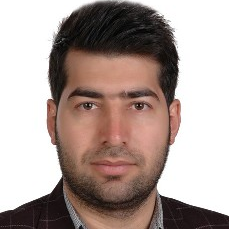GeoAI: Integration of Artificial Intelligence, Machine Learning and Deep Learning with Remote Sensing
A special issue of Remote Sensing (ISSN 2072-4292). This special issue belongs to the section "AI Remote Sensing".
Deadline for manuscript submissions: closed (9 March 2021) | Viewed by 91305
Special Issue Editors
Interests: artificial intelligence for remote sensing (AI4RS); artificial intelligence for natural hazards (AI4NH); land surface monitoring and change detection
Special Issues, Collections and Topics in MDPI journals
Interests: environmental sustainability; geospatial modeling; watershed management; natural disasters
Special Issues, Collections and Topics in MDPI journals
Interests: GIS; remote sensing; spatial analysis and GIS-based spatial decision support systems; object-based image processing
Special Issues, Collections and Topics in MDPI journals
Special Issue Information
Dear Colleagues,
This Special Issue focuses on advancements and innovative methods and solutions of Artificial Intelligence (AI) in remote sensing (RS) and Earth observation (EO). In particular, we call for contributions that describe methods and ongoing research, including algorithm development, data training strategies, and implementations.
Recent advancements in hardware and high-performance computing platforms have resulted in developing and implementing several state-of-the-art machine learning approaches (e.g., decision tree learning, reinforcement learning, inductive logic programming, Bayesian networks, and clustering) that can be applied for conducting satellite image analyses. In particular, deep-learning methods have become a fast-growing trend in RS applications and, above all, supervised deep convolutional neural networks have attracted a lot of interest in the computer vision and image processing communities.
These developments are triggered by an increasing need to mine the large amount of data generated by a new generation of satellites, including, for example, the European Copernicus system with its Sentinel satellites or the many satellites that were recently launched in China. The amount of data generated today almost necessitates the use of AI for the exploration of big data.
Still, many AI algorithms are in their infancy regarding a scientific explanation. For instance, the construction of CNNs is often done in a trial-and-error manner. How many layers should really be used? Researchers have access to a massive pool of a wide range of AI algorithms, but AI needs to be used together with physical principles and scientific interpretation.
This Special Issue seeks to clarify how AI methods can be selected and used in a way that they make them practicable and appropriate for RS applications. The performance of these choices may depend on the application case, the theory behind the AI algorithms, and how algorithms and AI architectures are developed and trained. Moreover, the capabilities of novel and hybrid AI algorithms have not yet been sufficiently investigated equally in different fields. There is a need to determine the performance of standalone and hybrid approaches in satellite image analysis.
To highlight new solutions of AI algorithms for RS image understanding tasks and problems, manuscript submissions are encouraged from a broad range of related topics, which may include but are not limited to the following activities:
- Big data
- Data fusion
- Satellite images
- Image processing and classification
- Superpixels
- Multiscale and multisensor data calibration
- The hierarchical feature learning process
- Data augmentation strategies
- Feature representation
- Patch-wise semantic segmentation
- Data processing from UAVs
- Hyperspectral imageries
- Scale issues and hierarchical analysis
- Scale parameter estimation
- Training/testing data collection
- Multiresolution segmentation
- Semantic segmentation
- Classifiers
- Object detection and instance segmentation
- Change detection and monitoring
- Natural hazard monitoring and susceptibility mapping (e.g., landslide, flood, wildfire, soil erosion)
- Disaster assessment, mapping, and quantification
- Humanitarian operations
- Scene recognition
- Urban land use classification
- Land use/land cover
- Complex ecosystem dynamics, e.g., wetland and coastal mapping
- Agriculture and crop mapping
- Vegetation monitoring
- Time series analysis
Mr. Omid GhorbanzadehDr. Omid Rahmati
Prof. Thomas Blaschke
Guest Editors
Manuscript Submission Information
Manuscripts should be submitted online at www.mdpi.com by registering and logging in to this website. Once you are registered, click here to go to the submission form. Manuscripts can be submitted until the deadline. All submissions that pass pre-check are peer-reviewed. Accepted papers will be published continuously in the journal (as soon as accepted) and will be listed together on the special issue website. Research articles, review articles as well as short communications are invited. For planned papers, a title and short abstract (about 100 words) can be sent to the Editorial Office for announcement on this website.
Submitted manuscripts should not have been published previously, nor be under consideration for publication elsewhere (except conference proceedings papers). All manuscripts are thoroughly refereed through a single-blind peer-review process. A guide for authors and other relevant information for submission of manuscripts is available on the Instructions for Authors page. Remote Sensing is an international peer-reviewed open access semimonthly journal published by MDPI.
Please visit the Instructions for Authors page before submitting a manuscript. The Article Processing Charge (APC) for publication in this open access journal is 2700 CHF (Swiss Francs). Submitted papers should be well formatted and use good English. Authors may use MDPI's English editing service prior to publication or during author revisions.
Keywords
- Remote sensing
- Pixel-based classification
- Object-based image analysis (OBIA)
- Artificial intelligence
- Machine learning
- Deep learning
- Convolutional neural networks (CNNs)
- Integrated architectures
Benefits of Publishing in a Special Issue
- Ease of navigation: Grouping papers by topic helps scholars navigate broad scope journals more efficiently.
- Greater discoverability: Special Issues support the reach and impact of scientific research. Articles in Special Issues are more discoverable and cited more frequently.
- Expansion of research network: Special Issues facilitate connections among authors, fostering scientific collaborations.
- External promotion: Articles in Special Issues are often promoted through the journal's social media, increasing their visibility.
- e-Book format: Special Issues with more than 10 articles can be published as dedicated e-books, ensuring wide and rapid dissemination.
Further information on MDPI's Special Issue polices can be found here.







